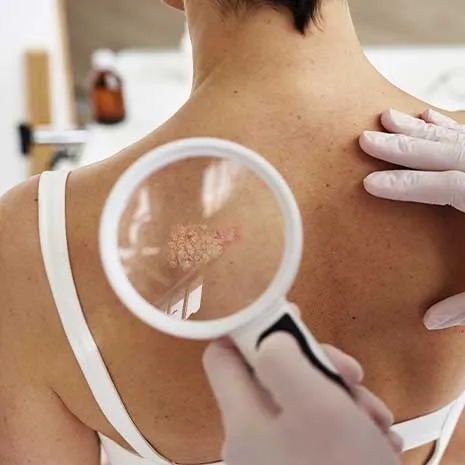Is There a Link Between Vitiligo and Skin Cancer Risk?

Is There a Link Between Vitiligo and Skin Cancer Risk?
- 26 August 2025
- 130

Understanding the Connection Between Vitiligo and Skin Cancer
Vitiligo is a chronic condition characterized by the loss of melanocytes, the pigment-producing cells in the skin. This leads to depigmented patches that are more vulnerable to UV exposure. Given melanin’s role in protecting the skin from ultraviolet radiation, many people wonder: Does vitiligo increase the risk of skin cancer?
To answer this, we must examine both the biological role of melanin and the epidemiological studies surrounding vitiligo and cancer incidence.
Melanin’s Protective Role Against UV Radiation
Melanin absorbs harmful UV radiation and prevents DNA damage in skin cells. It serves as the skin’s natural defense against:
- Sunburn
- Photoaging
- DNA mutations that could lead to cancer
Without melanin, skin is more susceptible to UV-induced changes. In theory, this suggests that vitiligo patches, which lack melanin, might be more vulnerable to skin cancers like melanoma or non-melanoma skin cancers (e.g., basal cell carcinoma, squamous cell carcinoma).
However, scientific findings tell a more nuanced story.
Scientific Evidence: What Research Says
1. Autoimmune Protection Hypothesis
Vitiligo is believed to be an autoimmune condition in which the immune system attacks melanocytes. Interestingly, this heightened immune activity might provide protective effects against skin cancers.
- T-cells that destroy melanocytes in vitiligo may also target melanoma cells.
- Some studies suggest lower melanoma incidence in people with vitiligo.
A 2016 study published in JAMA Dermatology even proposed that vitiligo patients may have a reduced lifetime risk of melanoma due to immune surveillance.
2. Phototherapy and Cancer Risk
Many vitiligo patients receive narrowband UVB (NB-UVB) therapy as a treatment. While this involves controlled UV exposure, long-term use raises concerns about cumulative UV damage.
However, research shows that:
- NB-UVB is much safer than PUVA (psoralen + UVA) therapy.
- Long-term NB-UVB use has not been associated with increased skin cancer rates.
Large cohort studies report no significant rise in basal or squamous cell carcinoma among vitiligo patients undergoing NB-UVB treatment.
3. Epidemiological Findings
Several large-scale studies have provided reassurance:
- Lower or similar rates of melanoma in vitiligo patients compared to the general population.
- No substantial increase in non-melanoma skin cancers.
- Vitiligo patients tend to practice better sun protection, which may offset UV risk.
UV Exposure and Depigmented Skin: Is There a Risk?
Yes — although cancer risk may not be significantly elevated, sunburn is a real and immediate concern for vitiligo patients.
Depigmented areas:
- Lack melanin’s protection
- Burn more easily under UV exposure
- May show photoaging and pre-cancerous changes like actinic keratosis
Hence, sun safety is critical, even if skin cancer rates are not disproportionately high.
Sun Protection Strategies for Vitiligo Patients
Regardless of cancer risk, preventing UV damage is essential for skin health and vitiligo management. Recommended steps include:
- Using broad-spectrum sunscreen with SPF 50+ on exposed skin
- Wearing protective clothing, hats, and sunglasses
- Avoiding sun exposure during peak hours (10 AM–4 PM)
- Monitoring skin regularly for changes
- Reapplying sunscreen every 2 hours when outdoors
Sun safety not only reduces burn risk but also helps prevent new vitiligo patches triggered by sun-induced trauma (Koebner phenomenon).
When to Be Cautious: Signs and Risk Factors
Although the average risk is not elevated, be alert if:
- A patch of skin changes color or texture
- Lesions begin to bleed, scale, or itch persistently
- You’ve had extensive PUVA therapy
- You have a personal or family history of skin cancer
- You’ve experienced frequent sunburns in depigmented areas
In these cases, a dermatological evaluation with dermoscopy or biopsy is advised.
Summary: What We Know So Far
|
Factor |
Evidence |
|
Vitiligo increases sunburn risk |
Confirmed due to lack of melanin |
|
Vitiligo increases melanoma risk |
Unlikely; may even reduce risk |
|
Phototherapy causes cancer |
Not with NB-UVB; PUVA carries more risk |
|
Sun protection is important |
Essential for all vitiligo patients |
|
Immune activity might protect against tumors |
Supported in some studies |
Frequently Asked Questions
No. Vitiligo does not directly cause skin cancer. In fact, due to its autoimmune nature, it may offer some protection against melanoma.
There is no evidence that vitiligo patches themselves become cancerous. However, they are more sensitive to sun damage, so protection is important.
Yes, especially NB-UVB phototherapy, which is widely used and not linked to increased cancer risk. PUVA, however, should be used with caution over long durations.
Not necessarily. Controlled, limited sun exposure may even help some cases, but protection is key to avoid sunburn and further depigmentation.
Consult a dermatologist immediately for evaluation, particularly if you have a history of vitiligo and sun exposure.
